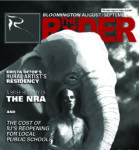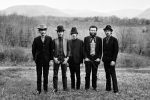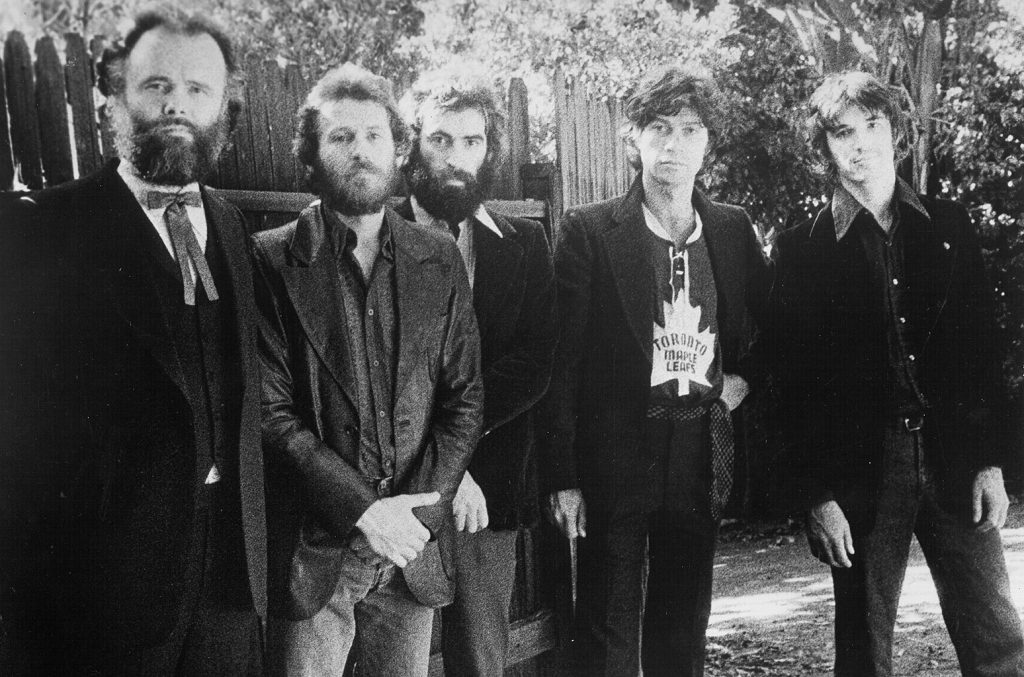WFIU Debuts a New 13-Part Podcast Series on Ernie Pyle
This month, WFIU Public Radio debuts a new 13-episode podcast series created by writer, producer, and actor Michael Brainard from the archives of the Ernie Pyle collection at the Lilly Library of Indiana University.
The Ernie Pyle Experiment!, chronicles Ernie Pyle’s pre-war work as a traveling columnist for the Scripps-Howard Newspaper syndicate. Ernie and his wife, Jerry, traveled America from 1935–1942, in quest of interesting stories for his column “The Hoosier Vagabond.” The Ernie Pyle Experiment! explores how it was done.
Each episode, through fact and fiction, examines the circumstances surrounding an actual Ernie Pyle column from this pre-WWII era. The podcasts are based on recently discovered wire recordings in the archives of the Smithsonian Institute that give listeners a view into the Pyles’ everyday lives on the road and what led to the creation of the column. Each episode ends with a reading of Pyle’s actual column.
The podcast series begins in the spring of 1936 with Ernie Pyle (played by Brainard) and his wife Jerry (played by actress Greta Lind) laden with the ongoing obligation of work and travel. Scripps-Howard has given Ernie a sound recording device to bring with him on his travels across America. They want to hear how he interviews people and potentially use the recordings for archival purposes, major story sources, and even radio broadcast. Ultimately, hundreds wire spools get filled with recordings of the Pyles’ everyday life together, not exactly what headquarters intended Ernie should be doing with it.
Subsequent episodes of The Ernie Pyle Experiment! follow the Pyles’ travels to Ernie’s hometown of Dana, Indiana, and other locations across the United States. The podcast also dramatizes Jerry’s real-life struggles with alcoholism and how the couple dealt with it.
The first episode of The Ernie Pyle Experiment! is now available at wfiu.org/erniepylepodcast and on other major podcasting platforms.
Here’s a snapshot of each episode.
EPISODE 1 – THE BOURGEOIS STANDARD
As pressure mounts from the home office, Ernie is forced to use a voice recorder for his work in interviewing the people of America. Though he resists the boss’s ideas, he and his wife Jerry find a different use for it—recording themselves.
EPISODE 2 – THAT LONG SAD WIND
A quick trip to Ernie’s hometown of Dana, Indiana, to visit his folks results in a disgruntled Jerry. She has grown accustomed to living a certain way on the road that may invite judgment from an in-law or two. In the balance is Ernie. He likes the road life too, but the pull homeward proves as mysterious as a Midwest wind storm.
EPISODE 3 – THE SNAKE STORY
Ernie’s parents are enjoying Ernie and Jerry’s visit home, but his mother just can’t seem to accept what her son has become—a city-living work-a-holic. She understands he must make his own way in the world, but she would much rather he do it closer to her, in Dana, Indiana. And she is beginning to think she may be ultimately responsible for how her young boy turned out.
EPISODE 4 – MY MOTHER
After putting some very fine stories through his typewriter during his visit home in Dana, Jerry prompts Ernie to turn them into a series about his hometown. She convinces him to use the recording device to see if he can muster up some stories about what the neighbors think about his mother. Sure, he knows more about his mother than all of them put together, but what could it hurt?
EPISODE 5 – PERHAPS YOU’VE HEARD OF MY FATHER
Ernie discovers that his father drove his car through the front plate-glass window of the Dana dry-goods store. In a quest to get to the bottom of it, he realizes he must ask the most difficult question of his father, and himself: Who is going to care for his folks in their twilight years?
EPISODE 6 – THIRTY YEARS TOO SOON
In his quest to round out “the Dana series” of columns, Ernie targets his favorite aunt, Mary. In so doing, he seeks out Jerry’s help. However, Jerry may not be in the best state of mind as she has been holed up in his childhood bedroom contemplating the depths of a bourbon bottle. Not understanding how many sheets-to-the-wind Jerry has on her laundry line, Ernie insists she open the recorder on Aunt Mary.
EPISODE 7 – NOT THE WASHINGTON POST MARCH
Finally back on the road, Ernie and Jerry stop into a favorite haunt for the night. However, it is in Ohio. Ohio is home to five newspapers in the Scripps-Howard newspaper chain, Ernie’s employer, and whenever he sets foot in Ohio, they harass him for stories about their cities. It is all Ernie and Jerry can do to stay incognito until they get out of Ohio. A drink and a room, that’s all they ask!
EPISODE 8 – HAVE YOU BEEN AWAY?
Ernie and Jerry make their way to Washington, DC, where they are headquartered, and where they keep a home. But, before they make their way home, they stop in a city park for lunch. Forgetting how much a celebrity his column has made him, Ernie gets uncomfortable when people start to recognize him. He escapes on foot, leaving Jerry with the car and a thermos filled with rum. What could go wrong?
EPISODE 9 – A DESOLATE CORPORATION
Ernie’s first writing job was as an aviation columnist in The Washington Daily News. Amelia Earhart once said, “Not to know Ernie Pyle is to admit that you yourself are unknown in aviation.” Still believing Ernie is the one to go to for breaking news in the aviation world, Amelia drops in with some friends to await the facts of a pilot, and dear friend, reported down in the Rocky Mountains.
EPISODE 10 – THE ZIPPER
Though seldom out of ideas for the column, Ernie would write about anything, even if there were better reasons to write something else. Stories about himself always seem to make it into the column, here and there. And bolstering himself up as a bumbling fool is one of his favorite pastimes. So, when Ernie buys a new pair of pants with zipper that does not work, he uses the event to craft an all-time favorite column.
EPISODE 11 – A BED OF COALS
Ernie pays a visit to the home office for a meeting with his editor, Lee Miller. Miller, an old friend, knows about Jerry and her struggle with sobriety. He wants to make sure his investment, and friend, Ernie is not being affected by his wife’s problems. Ernie, feeling backed into a corner, looks for a way out.
EPISODE 12 – THE SIMPLE PROPOSITION
Jerry, happy to be back on the road, celebrates a little bit too much. It is all Ernie can do to stabilize her so he can make it to Albany by sundown. But Jerry has her own agenda. She forces Ernie into her state of mind, and Ernie sees that the near future is going to be problematic if Jerry is to stay by his side.
EPISODE 13 – GONE WITH THE WIND
It is three weeks since Ernie dropped Jerry off back at their home in Washington, DC. Jerry has been in the care of doctors, and she has sobered up and hasn’t had a drink since. When a caregiver comes by to check on her and her state of mind, Jerry circles the wagons. The “good-advice” and “wise council” are coming, and she might have something to say about that.









 Thu, Apr 9, 12:31 AM (1 day ago)
Thu, Apr 9, 12:31 AM (1 day ago)


